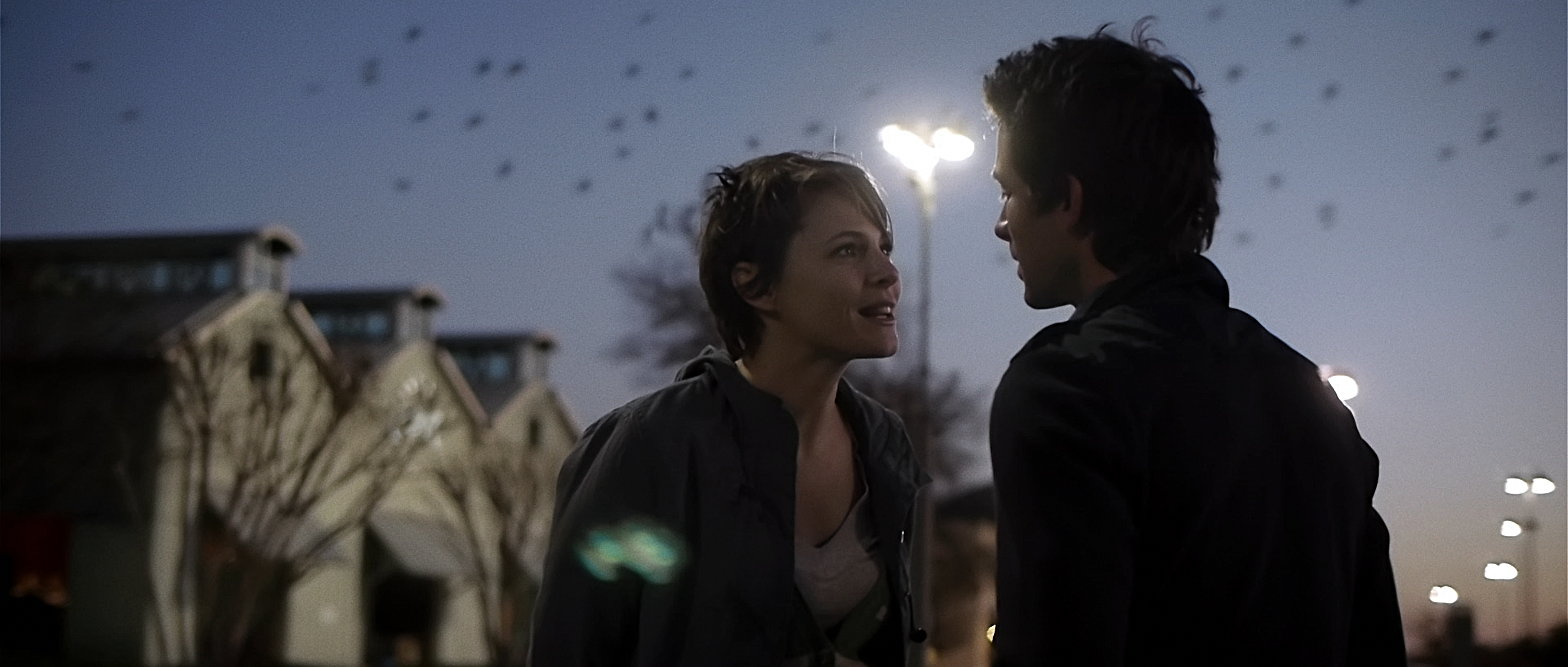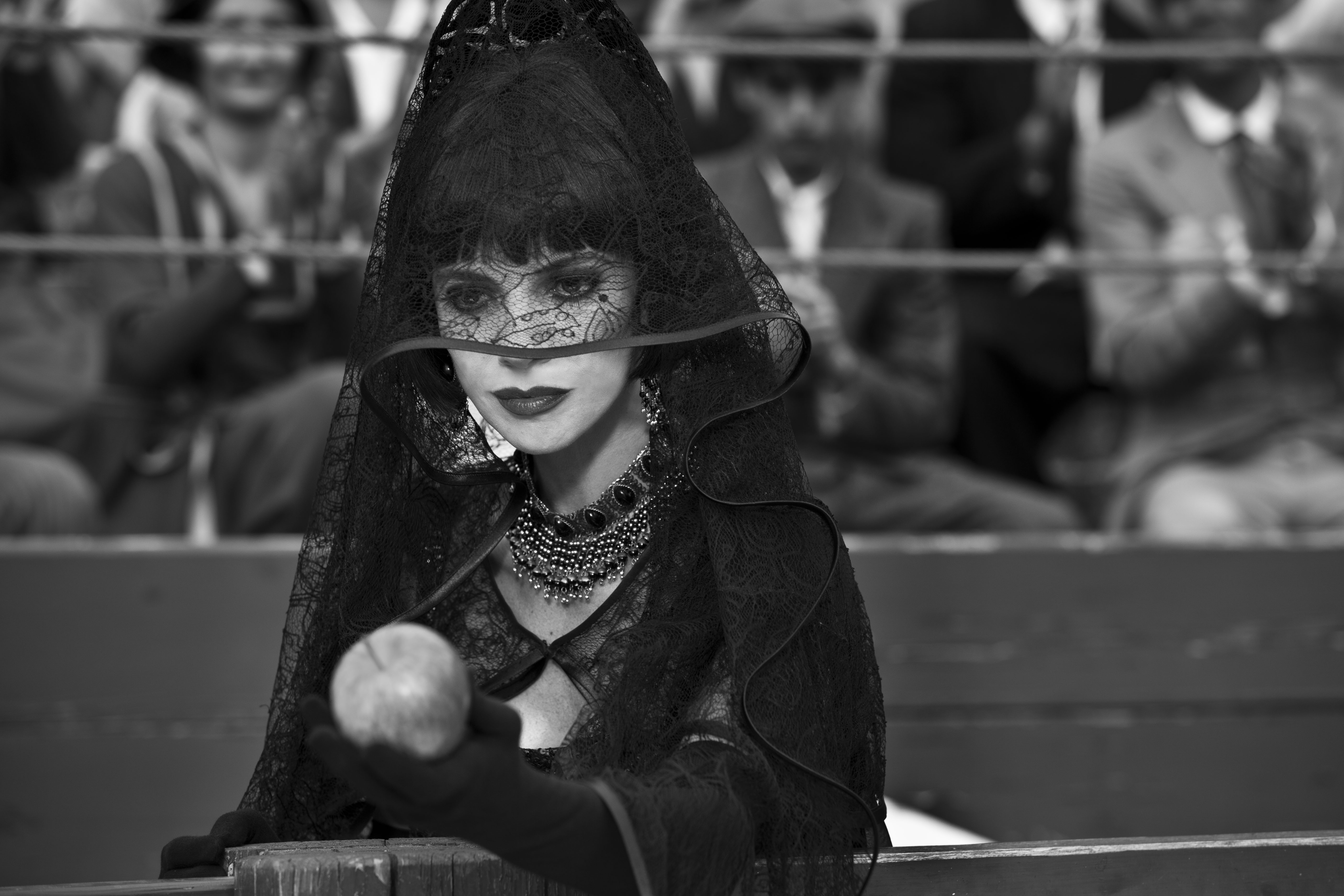Band of Sisters
Runs Fri., April 12–Thurs., April 18 at Northwest Film Forum. Not rated. 88 minutes.
The new pope grabs the headlines, but what about all those less-famous nuns? Toiling away to serve the poor, protesting the expulsion of undocumented migrant workers, tending to AIDS patients, founding hospitals, lobbying politicians, building low-income housing, picketing the School of the Americas, organic farming, podcasts . . . well, there’s pretty much nothing nuns can’t do in Mary Fishman’s very admiring documentary. Some rather charming archival footage and stills show the liberating effect of the 1962–65 Second Vatican Council, which allowed nuns to drop their old attire, leave their convents and cloisters, and serve the needy. “We didn’t have Volunteer Corps or Peace Corps or anything like that,” says one gray-haired Chicago nun. For a good Catholic girl of that era, serving mankind was a nobler, grander alternative to simply serving a husband. One can’t help but share Fishman’s esteem for these (mostly) older women; they’re practical Catholics working down in the trenches among the downtrodden. (No miters or bishop’s hats for them!)
Still, given the context of the church’s child-sex-abuse scandals and the gerontocracy ruling the Vatican, to say nothing of abortion rights and contraception, Band of Sisters keeps to a rather narrow, cloistered perspective. We see the good works, but secular women can do good works outside the church, too. No numbers are given for the large number of nuns who abandoned the church entirely during the ’60s and ’70s; we only get one anecdotal case. That women can’t be Catholic priests is an injustice, as the film notes, one that potential new initiates are likely to reject along with the church’s institutional sexism. There are very few young nuns in Band of Sisters, which lends the doc a Last of the Mohicans vibe. Any woman who came of age in the ’60s will recognize the liberal ideals that suddenly washed through American convents. (Fishman’s interest doesn’t extend abroad or to stricter sisters.) One has to wonder, however, if any nuns will be left in the 2060s. (Note: Sister Nancy Sylvester will attend the 7 p.m. screening on Saturday.) BRIAN MILLER
PBlancanieves
Opens Fri. April 12 at SIFF Cinema Uptown. Not rated. 104 minutes.
The obvious comparison to Pablo Berger’s inventive retelling of Snow White as a silent-movie melodrama, set in the 1920s bullfighting scene of Seville, is The Artist. Both channel the international language of silents for modern viewers, and both have been embraced by audiences and lavished with awards. Blancanieves comes stateside with 10 Goya Awards, Spain’s answer to the Oscars.
The similarities end there. Berger draws from different inspirations—grand melodrama, flamenco, circus fantasy, and toreador worship—and mixes them with silent-film conventions and contemporary storytelling. Think Blood and Sand by way of Victor Sjostrom and Pedro Almodovar, with a modern, empowered heroine.
That heroine—called “Snowhite” in one mashed-up word—is Carmen (Macarena Garcia), the all-but-abandoned daughter of a crippled bullfighter (Daniel Gimenez Cacho). Her social-climbing wicked stepmother Encarna is played by Maribel Verdu (Y Tu Mama Tambien) with scheming, sadistic glee. There’s also a band of dwarfs with a gypsy bullfighting act and a poisoned apple, but the fairy-tale elements end there. In the enchanted corrida, amnesia-struck Snowhite becomes a matador in her own right, an adored heroine and Prince Charming all at once.
Berger plays the melodrama big, and Verdu vamps it for all she’s worth. Venom drips from Encarna’s smiles. Her eyes burn with excitement as she turns the adorable, eternally optimistic Carmen into a scullery maid and her chauffeur-turned-lover into an obedient dog—complete with leash. No one is going to mistake this self-aware silent film for a period classic, but Berger’s creative energy and inventiveness more than justify the retro appropriation.
Berger’s previous Torremolinos 73, seen at SIFF ’04, mixed Franco-era repression and ’70s pornography with a perfectly sweet romantic comedy. Blancanieves skips the politics for fleeting dreams of corrida glory, yet they’re at the mercy of money and greed. More powerful than Encarna’s wickedness is the predatory grip of a dodgy agent with an exclusive contract. The show is all, which is the tragedy of this tale. Blancanieves ends not with a cheer but a tear. SEAN AXMAKER
The End of Love
Runs Fri., April 12–Thurs., April 18 at Grand Illusion. Not rated. 90 minutes.
Mark Webber, the young writer, director, and star of The End of Love, has an easy, believable rapport with the 2-year-old who plays his son in the film. For good reason: Isaac is his real-life son. Webber here plays a slightly skewed version of himself, a struggling actor in Los Angeles raising Isaac by himself after his wife dies in a car accident. Isaac and Mark sleep in the same bed, eat mac and cheese together, and give each other Magic Marker tattoos. Mark patiently tries to answer the tot’s barrage of questions: Do you dream about trains? Are you afraid of snakes? Why’s this car so warm? What’s dying?
When Mark takes Isaac to the cemetery (which Isaac knows as “the park with flowers”) and pours out his feelings to his wife’s grave, Isaac squealing in his arms, the scene is heartrending. Meanwhile, Mark is behind on his rent and stalled in his career. At an audition with Amanda Seyfried (Les Miserables), he forces out his lines over the sound of Isaac chattering and crying. “This is so embarrassing,” he whispers. Later, at a party at Michael Cera’s house, surrounded by a cadre of hip, successful comedians like Parks and Recreation’s Aubrey Plaza and New Girl ’s Jake Johnson, the desperate Mark lies about landing a part in Paul Thomas Anderson’s new film with Ryan Gosling and James Franco, symbols of the sexy, in-demand career that eludes him. (In reality, Webber has appeared in films including Scott Pilgrim vs. The World and The Hottest State.)
What finally brings Mark down to Earth is Lydia (Shannyn Sossamon, A Knight’s Tale), a single mom with a swingy, chin-length bob who takes an interest in him. Whether the blundering yet sympathetic Mark deserves her love is open to question. (Another question is how much of the film is autobiographical; Webber wrote it after splitting with his son’s mother, who’s still very much alive.) Full of raw and confessional feeling, The End of Love moves slowly yet affectingly. Its listless pace adds to its sense of real, unfiltered life. ERIN K. THOMPSON
PGimme the Loot
Opens Fri., April 12 at Varsity. Not rated. 81 minutes.
As they complain about HBO’s Girls today, as people have long complained about Woody Allen, New York isn’t a city comprising only neurotic white people whining about their relationship troubles on the sidewalk. Adam Leon once worked on Allen’s sets as a PA, and he clearly heard those complaints. His promising debut feature follows two teen graffiti artists from the Bronx to Manhattan and back during one long summer day. Malcolm (Ty Hickson) has a plan to “bomb” (i.e., tag) Shea Stadium, home of the hated Mets. Sofia (Tashiana Washington) points out that they lack the $500 necessary to bribe the stadium groundskeeper. What follows is a charming, picaresque adventure to gather the loot—petty efforts at crime that invariably result in comic bungling and blame. (“Google how to pick a lock!”) During its course, Malcolm loses his sneakers and pot- courier job, Sofia loses her bike, and both begin to sense feelings stronger than their fellowship in Krylon. Although they can explode into mighty fits of trash-talking (both to each other and to rivals), there’s no real heat to these tirades, their words as exaggerated and colorful as their graffiti lettering. Long walking-and-talking scenes with Malcolm and Sofia do recall Allen, but this is Spike Lee’s city, with white privilege on the periphery. Leon doesn’t insist this is a life- changing day for his two teens, but it’s an odyssey of small, meaningful moments. BRIAN MILLER
Starbuck
Opens Fri., April 12 at Sundance Cinemas and Lincoln Square. Rated R. 108 minutes.
Who doesn’t love children? And more children means more love, right? In this very broad, sentimental French-Canadian comedy, a 40-ish schlub named David (Patrick Huard) once used the code name “Starbuck” to make donations at the sperm bank. Two decades later, it’s revealed that the clinic used his sperm exclusively—meaning the still-anonymous David now has over 500 college-age offspring. A graying layabout bachelor with an impatient girlfriend, debts, and a job delivering meat for his family’s butcher shop, David is clearly unfit to be a father. You can see where this is going. The unknown Starbuck becomes a huge tabloid story. His kids file a class-action suit to reveal his identity. David is aghast, then curious about his heirs, whom he secretly begins to visit and befriend. (“I can be their guardian angel!”) Each child creates a vignette for David to demonstrate his shaggy, bungling decency: There’s a soccer star, an actor, a heroin addict, a wheelchair kid with cerebral palsy, and so forth. To fight the lawsuit, David enlists his best friend and attorney (Antoine Bertrand), a chubby, hectored father who says his kids have destroyed his life. There’s never any doubt as to how these antics will resolve, since David is a good guy from start to finish. How do you say mensch in French? Or Apatow, for that matter? The American remake could star Jason Segel as David (with the kids a little younger), and I’m seeing John C. Reilly as the lawyer (unless Jonah Hill gains the weight back). But what about casting those 500 mothers? Don’t worry, Starbuck doesn’t consider a single one. BRIAN MILLER
To the Wonder
Opens Fri., April 12 at Egyptian. Rated R. 113 minutes.
Though booed at its Venice Film Festival premiere, Terrence Malick’s To the Wonder is hardly awful. It’s minor Malick, a movie that plays like something cut from his grand 2011 The Tree of Life—scraps, but worthwhile scraps. To the Wonder is essentially a love triangle, a very slow love triangle, among Neil (Ben Affleck), an Oklahoma environmental engineer, and two women. Neil’s job is to measure the damage man does to God’s creation, and the most eloquent scenes consist of him trudging through toxic mud and slag heaps, monitoring groundwater contamination, and talking to alarmed locals about pollution in their poor neighborhoods. In the background we see the prairie being scraped and prepared for more ugly suburbs—so hateful to Malick, that poet of the grass.
At first I thought this was another anti-fracking movie, though it begins with Neil’s vacation in France. There he meets single mother Marina (Olga Kurylenko), a lively Parisian with a 10-year-old daughter. Marina and Neil wander ecstatically around Mont Saint-Michel, that soaring medieval monastery ringed by tide flats, jumping on wet sand that undulates like a trampoline, marveling at the mud-cupped incoming waters. It’s achingly beautiful, one of a few priceless Malick images in the film (photographed by Emmanuel Lubezki). Climbing the stairs to a cloistered garden is to ascend “to the wonder,” Marina muses in voiceover.
Back in Oklahoma, however, the wonder disappears from their new romance. The two quarrel, and Neil turns to his high-school sweetheart, Jane (Rachel McAdams). In the dreamy, elliptical scheme of To the Wonder, the exact sequence of falling in and out of love doesn’t really matter. It’s the pauses amid the relentless rush of time that count for Malick, as when Neil and Jane visit a buffalo herd at sunset. They’re awed, as are we, to feel the woolly presence of lost history, the prairie’s ancient ambassadors, the pinnacle of a prehuman tree of life (rather like the dinosaurs in Tree of Life).
And yet nothing much happens in To the Wonder. All Malick’s signatures are there (fingers in the grass, hushed spiritual whispers, sun flares, etc.), but the stakes feel smaller than Tree of Life’s family tragedy and final God-blessed reunion. Neil is just a guy who can’t commit to love, not unlike Father Quintana (Javier Bardem, in a thankless, poorly integrated role), the local priest who can’t find his faith anymore. “Show us how to seek You,” he implores. We’ve heard it before, and recently, in Tree of Life. To the Wonder ultimately feels like a catch-up project from a man suddenly worried about meeting his earthly quota before climbing to the wonder himself. BRIAN MILLER
PTrance
Opens Fri., April 12 at Guild 45th and other theaters. Rated R. 104 minutes.
Hypnosis is a hoary old plot device at the movies. Add to that that Danny Boyle is here remaking an English TV movie from 2001, and Trance wouldn’t seem very promising. But the director of Trainspotting and Slumdog Millionaire is always determined to be modern, abreast of the latest fads, and he packs this amnesiac crime tale with iPads, cell phones, slick images (by cinematographer Anthony Dod Mantle), gunfire, Google searches, explosions, and full-frontal nudity. Hypnosis or no, we keep watching the enjoyably twisty Trance—always the case with Boyle’s nervy, propulsive tales, even when the material wears thin (see The Beach, A Life Less Ordinary). And if you get lost in the serpentine plot, fear not; the film is ultimately simpler than it seems.
The hypnotee, if we can call him that, is Simon (James McAvoy), who works in a posh London auction house. When a Goya goes on the block, he tells us, it could fetch 27 million pounds (about $41 million). But instead that painting is stolen in a brazen, well-planned art heist, despite the security Simon describes in such keen detail. His knowledge makes us suspicious, but Simon gets bashed on the head with a shotgun for trying to protect the Goya—surely he can’t be a bad guy, can he?
The hypnotist is Elizabeth (Rosario Dawson), an American abroad, whom Simon picks at random on the Web for treatment. His problem is this: Simon may or may not be a bad guy, who possibly stole the painting himself or possibly double-crossed the thieves he was aiding. Either way, because of the brain injury (seen in a glowing PET scan), he can’t remember where he hid the Goya. It’s a very clever premise, compounded with themes of trust and betrayal. After trying to torture Simon, the thieves, led by Franck (Vincent Cassel), have no choice but to try, with Elizabeth’s help, to hypnotize Simon into recalling the Goya’s location.
Boyle and his writers keep the surprises coming (and then some), though Trance boils down to a noir-ish love triangle among Simon, Elizabeth, and Franck. The Goya gradually recedes in importance; this is a story about not art but the tangled impulses of greed, love, and loyalty. In many ways, it’s an upscale cousin of Boyle’s 1994 Shallow Grave (whose screenwriter, John Hodge, here adapts Joe Ahearne’s original teleplay). Each of the three main players has their skin ripped back to reveal new personalities and agendas. Elizabeth (and Dawson) bares the most, which may seem exploitative to some.
I would argue, however, that women have the upper hand in Trance. In a film that constantly loops us back to question prior scenes (are they real or hypnotic states?), there’s a Russian-doll layering of veracity and hypnotic suggestion. (Hint: When someone gets shot, they may not be dead.) But Elizabeth is always the architect, planting bits of code among the dumb male thieves. She’s the queen, and they’re her drones. When the malevolently smiling Simon asks, “I have free will, don’t I?”, Boyle leaves the question unanswered. Do the miserable, confused figures in Goya’s Witches in the Air have any say in how they’re depicted? No. Only Goya pulls the strings. Or Elizabeth. Or Boyle. BRIAN MILLER
Upstream Color
Opens Fri., April 12 at SIFF Cinema Uptown. Not rated. 96 minutes.
Those who loved Shane Carruth’s 2004 debut Primer for its technobabble—and who thought his consulting on the time-travel blockbuster Looper signaled more hard sci-fi from the experimental filmmaker—are bound to be disappointed by his follow-up feature. Upstream Color maintains the gauzy style of its predecessor and exists in the same disorienting, dreamlike world. But there is no gadgetry at play here.
Instead, Upstream Color is a love story involving two deeply damaged individuals. Divorced financier Jeff (Carruth) is a recovering junkie with a criminal history. Broke sign-shop employee Kris (Amy Seimetz) is a heavily medicated lost soul with trust issues. Their attraction, more than physical, seems to be based on the fact that neither is completely responsible for his or her downfall. Rather, a parasitic grub is to blame. Complicating matters is a pig farmer who freelances as an audio engineer and who might be God, or maybe Jeff’s creepy boss. Thoreau’s Walden plays a big part, too. Yeah, it’s complicated. But that’s Carruth’s style.
With Primer, that style resulted in a small but devoted following of fans obsessed with the film’s difficult architecture, transmitted through rapid jump-cuts and a mumbling engineer played by Carruth. Though some claim to have cracked Primer’s code, most filmgoers were rewarded with confusion and eye strain. That’s not the case with Upstream Color, which isn’t an exercise in obfuscation; pay attention and you’ll discern a coherent narrative. But that attention is sometimes a challenge to maintain. Upstream Color is a surreal work, and Carruth tells his story with rapid-fire jump-cuts, a depressed economy of words, and an ethereal electric-piano score (also by Carruth) that is unnerving at times and unrelenting always.
It’s difficult to discern whether the film’s lo-fi cinematography, jolting pace, and oddly dry-sounding overdubbed dialogue are stylistic choices by a groundbreaking filmmaker on a tight budget or the result of a still-green artist groping to understand his medium on a tight budget. What is clear is that Carruth is a much better storyteller than Primer indicated. Upstream Color’s ending is clumsy and obvious, more PSA than avant-garde, but the somewhat patronizing coda makes it clear that Carruth has something more to share than confusion. MARK BAUMGARTEN
E
film@seattleweekly.com






